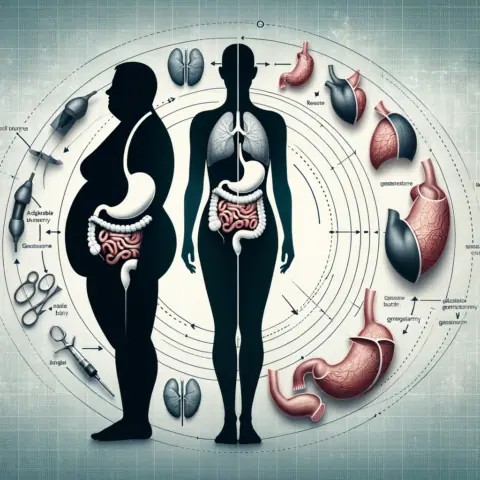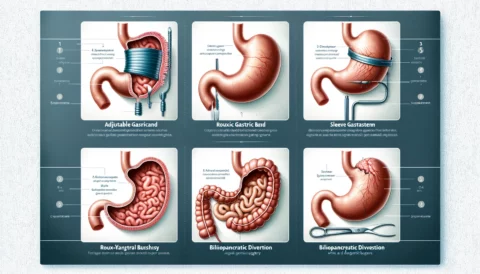In a bustling city like Dallas, Peak Bariatric is recognized as one of the leading providers of bariatric surgical services, with the gastric bypass procedure being one of the most popular offerings. If you’re considering this transformative journey, understanding the procedure’s specifics is essential. In this article, we’ll demystify the steps involved in a gastric bypass surgery.
The Preliminary Phase: Making the Right Choice
Before diving into the technical aspects of the surgery, it’s essential to ensure you’re making the right decision. Consider reading up on the ultimate guide to weight loss surgery to fully grasp your options and the impact this choice will have on your life. Gastric bypass isn’t just a physical transformation; it’s a commitment to a new lifestyle, one that comes with its own pros and cons.
Consultation and Choosing the Right Surgeon
Once you decide to proceed, the next crucial step is selecting the right surgeon. Dallas boasts some of the best bariatric surgeons, but choosing the right surgeon for gastric bypass in Dallas is paramount to your surgery’s success and your future health.
During this phase, the surgeon evaluates the patient’s health status and ensures they’re a suitable candidate for the procedure. They’ll likely address many myths and misconceptions associated with the surgery. Familiarizing yourself with the common misconceptions about gastric bypass can help you approach this consultation with clarity.
Preparation for Surgery
As the surgery date approaches, preparation becomes vital. This stage involves:
- Dietary Changes: Adhering to nutritional guidelines for Dallas gastric bypass patients ensures your body is in the best possible state for surgery.
- Physical Evaluation: Understanding the emotional aspects of gastric bypass is as critical as the physical ones. Emotional readiness is crucial for post-operative success.
- Setting Expectations: A key aspect of preparation is knowing what to expect. Engage with content that provides a step-by-step walkthrough of the procedure to ease any anxieties or fears.
- Insurance and Financial Aspects: Surgeries come with costs. Familiarize yourself with the ins and outs of what you need to know about insurance coverage to avoid unforeseen expenses.
The Day of the Surgery
On the D-day, patients undergo the procedure in a state-of-the-art facility with a dedicated team ensuring everything goes smoothly. The steps include:
- Anesthesia: The patient is administered general anesthesia, ensuring they’re asleep and don’t feel pain during the surgery.
- Making Incisions: The surgeon makes small incisions in the abdomen, ensuring minimal scarring post-surgery.
- Creating the Stomach Pouch: A small pouch is made at the top of the stomach, separating it from the rest.
- Connecting the Small Intestine: The surgeon bypasses a part of the stomach and the first section of the small intestine. The bottom end of the divided intestine is brought up and connected to the newly created stomach pouch.
While this provides a snapshot of the surgery, there’s more to explore about the post-operative phase, recovery, and life after gastric bypass. Join us as we delve deeper into these aspects in the next section.
The actual surgical procedure of a gastric bypass might only last a few hours, but the journey extends far beyond the operating table. For residents of Dallas who opt for this transformative surgery at Peak Bariatric, understanding what life post-surgery entails is paramount. Here’s a detailed view into the recovery process and the long-term lifestyle changes.
Immediate Recovery
Post-surgery, patients are typically monitored in the hospital for 2-3 days, depending on individual health conditions and how well the body responds to the procedure.
- Post-operative Care: At Peak Bariatric, a team of dedicated professionals ensures patients get the best care. This includes managing pain, monitoring vital signs, and ensuring there are no immediate complications from the surgery.
- Resuming Diet: Initially, patients are on a liquid diet. Over time, they graduate to pureed food, soft food, and then slowly transition to a regular, albeit modified, diet. The dietary guidelines for Dallas gastric bypass patients provide detailed insights.
- Physical Mobility: Movement is encouraged as soon as possible to prevent blood clots and other complications. A slow walk around the room can be the first step towards full mobility.
Long-term Recovery and Lifestyle Changes
- Diet and Nutrition: One of the most significant changes is the diet. The stomach’s reduced size means smaller meals, with a focus on protein-rich foods. It’s also essential to take vitamin and mineral supplements since the altered digestive system might not absorb certain nutrients effectively. Exploring the dos and don’ts of post-gastric bypass diet can be enlightening.
- Exercise: Regular physical activity is crucial for maintaining weight loss and overall health. Gradually, patients can engage in more strenuous activities, ensuring they get the recommended amount of exercise each week.
- Regular Check-ups: Regular visits to the doctor will be a part of life post-surgery. These help monitor nutritional deficiencies, weight loss progress, and any potential issues that might arise.
- Emotional and Psychological Support: Mental health is as essential as physical health. Many patients benefit from joining support groups or seeking therapy to deal with the emotional aspects of dramatic weight loss and lifestyle changes. Discover more about navigating the emotional terrain after gastric bypass.
Conclusion
While a gastric bypass procedure can be the first step towards a healthier life, it’s just the beginning of a longer journey. The road to recovery requires dedication, consistency, and a commitment to a new lifestyle. With the right guidance, support, and resources, patients can make the most of their new lease on life and enjoy the myriad benefits that come with improved health and well-being. Peak Bariatric in Dallas is there every step of the way, ensuring every patient’s journey is a successful one.
Key Takeways
- Immediate Recovery
- Hospital stay: 2-3 days post-surgery.
- Post-operative care: Pain management, vital sign monitoring, and checking for complications.
- Diet progression: Liquid -> Pureed -> Soft -> Modified regular diet.
- Early mobility: Encouraged to prevent blood clots and promote healing.
- Long-term Recovery and Lifestyle Changes
- Diet and Nutrition:
- Smaller meal portions due to reduced stomach size.
- Emphasis on protein-rich foods.
- Vitamin and mineral supplements essential.
- Exercise:
- Importance of regular physical activity.
- Gradual progression to more strenuous activities.
- Regular Check-ups:
- Monitor nutritional deficiencies, weight loss, and potential issues.
- Emotional and Psychological Support:
- Importance of mental health.
- Support groups and therapy beneficial.
- Diet and Nutrition:
- Conclusion
- Gastric bypass is a significant first step but requires ongoing commitment.
- Success relies on dedication, consistency, and a new lifestyle.
- Peak Bariatric in Dallas offers support throughout the journey.







